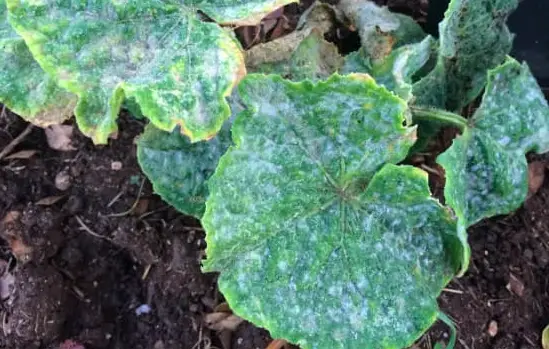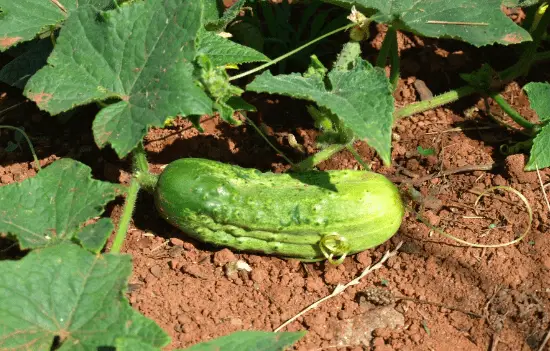Cucumber plants are great to grow in the home garden. They are easy to care for and produce a bountiful harvest. However, cucumbers can be susceptible to a number of problems if you don’t pay attention to their basic needs. One of the most common problems is overwatering.
In this blog post, we will discuss whether cucumber plants can be overwatered, what to look for if you think your cucumber plant is overwatered, and how to fix the problem.
Can Cucumber Plants be Overwatered?
Yes, cucumber plants can be overwatered. Overwatering is a common problem with cucumber plants, especially for those grown in containers. When cucumbers are overwatered, they can develop a number of problems, including yellow leaves, stunted growth, and root rot.
Not taking action to address an overwatered cucumber plant can eventually kill the plant. If you think your cucumber plant is overwatered, it’s important to take action immediately to correct the problem.
What do Overwatered Cucumber Plants Look Like?
If you think your cucumber plant is overwatered, there are a few telltale signs to look for:
Wilting leaves – One of the most obvious signs is wilting leaves. When a cucumber plant is overwatered, the leaves will begin to droop and wilt. They may even appear wet, mushy, or develop holes.
Yellow leaves – This is another sign of overwatering. If the leaves of your cucumber plant turn yellow, this is a sign that the plant is not getting enough oxygen via the roots. However, yellow leaves can also be a symptom of other problems, such as nutrient deficiencies.
Rotting roots – Root rot is another common problem with overwatered cucumber plants. Root rot is caused by a build-up of water in the soil around the plant roots. This can cause the roots to suffocate and die. The roots will be black, mushy, and smelly when they are affected by root rot.
Powdery mildew – This is a type of fungus that can affect cucumber plants. It is characterized by a white or gray powdery coating on the leaves of the plant. Powdery mildew can be caused by overwatering, as well as other problems, such as high humidity levels.
Stunted growth – If your cucumber plant is overwatered, you may also notice that the plant has stunted growth. The stem and leaves of the plant will be smaller than normal, and the plant may produce fewer fruits than usual. This can also happen if a cucumber plant is too cold.
All of these symptoms can be found on overwatered cucumbers. This article contains many some pictures of overwatered cucumber plants so you can see what to look for.

How Much Water do Cucumber Plants Need?
In general, cucumber plants should be watered about once a week. However, the amount of water a cucumber plant needs will vary depending on the size of the plant, the type of soil it is grown in, and the weather conditions.
If you are unsure how much water your cucumber plant needs, it’s best to err on the side of caution and water less often. It’s better to underwater a cucumber plant than to overwater it.
The best way to determine how often to water your cucumber plant is to check the soil around the plant. The soil should be moist but not soggy. If the soil is dry, it’s time to water the plant.
Moisture meters are a great tool to help you determine how much water your cucumber plant needs. Simply insert the meter into the soil and it will give you a reading of how much moisture is present.
Cucumber plants also need well-drained soil. This may mean adding some sand to the soil to improve drainage. If your cucumber plant is in a pot or container, make sure that the pot has drainage holes to allow excess water to drain away.
How Do You Save Overwatered Cucumbers?
The good news is that it is possible to save an overwatered cucumber plant. If you catch the problem early, you may be able to reverse the effects of overwatering and save your plant.
First, stop watering the plant immediately. Allow the soil around the plant to dry out completely before watering again. This will give the plant a chance to dry out and recover.
Next, you need to check the roots of the plant. There’s no point trying to save an overwatered cucumber plant if the roots are already dead or dying. If the roots are starting to look black, mushy, or rotten, it’s best to prune them away.
You can prune cucumber roots by cutting away the affected roots with a sharp knife. Be sure to disinfect the knife before and after pruning to avoid spreading disease. Discard the affected roots in the trash.
Once you have pruned away any dead or dying roots, you can replant the cucumber plant in fresh, well-drained soil. If the plant is in a pot or container, make sure to choose one that has drainage holes.

How to Prevent Overwatering Cucumber Plants?
Preventing overwatering is the best way to avoid the problems associated with it. Here are some tips to help you prevent overwatering your cucumber plant:
- Water early in the day so that the plant has time to dry out before nightfall
- Check the soil around the plant before watering. The soil should be moist but not soggy
- Add sand to the soil to improve drainage
- Choose a pot or container with drainage holes
- Don’t water the plant if it has rained recently
Following the tips above will help you avoid overwatering your cucumber plant. I’ll now go deeper into the key tips so that you can get a better understanding of how to prevent overwatering.
Water early in the day – Watering early in the day will give the plant time to dry out before nightfall. This is important because cucumber plants are susceptible to fungal diseases if they stay wet for too long.
Check the soil before watering – Checking the soil before watering will help you to determine whether the plant actually needs water. The soil should be moist but not soggy. If it is, then the plant doesn’t need any more water.
Add sand to the soil – Using well-draining soil is important to prevent overwatering. If you don’t have any appropriate soil, adding sand to the soil will help improve drainage and reduce the risk of overwatering.

Choose a pot or container with drainage holes – If you’re growing cucumbers in a pot or container, make sure that it has drainage holes. This will allow any excess water to drain away and help to prevent the plant from becoming overwatered.
Use a drip irrigation system – A drip irrigation system can help to prevent overwatering by delivering water directly to the roots of the plant. It means you don’t have to guess when to water the plant and you can be sure that the roots are getting the correct amount of water.
Monitor the weather forecast – If you know that rain is forecast, don’t water the plant. The rain will provide enough water for the plant and watering it yourself will just increase the risk of overwatering.
Conclusion
In conclusion, overwatering is a common problem that cucumber growers face. It can cause problems such as root rot, fungal diseases, and yellow leaves. To avoid these problems, it’s important to water early in the day, check the soil before watering, add sand to the soil to improve drainage, choose a pot or container with drainage holes, and monitor the weather forecast.
By following these tips, you can help to prevent overwatering and keep your cucumber plant healthy. Thanks for reading! I hope this article was helpful.
Do you have any cucumber growing tips? Please share them in the comments below!
Tim is an avid gardener from the UK. He was the founder of PlantCarer.com from 2021 to Sep 2023. He sold PlantCarer.com to Aaron. He has since started his own business called Seed To Supper, which provides new gardeners all the materials you need in a box (pots, seeds, compost and instructions) to grow your own delicious and nutritious vegetables and herbs from start to finish – no garden required.









0 Comments